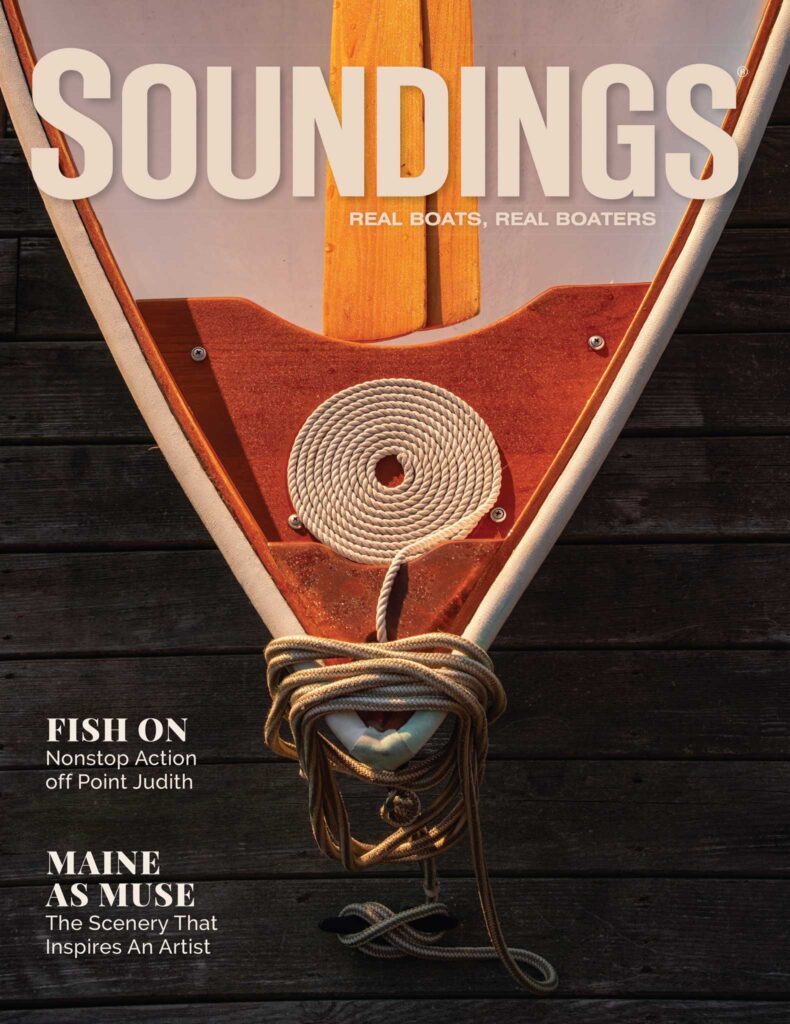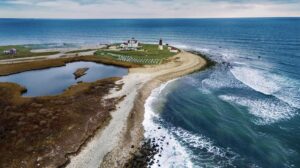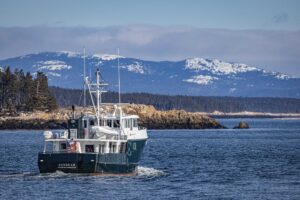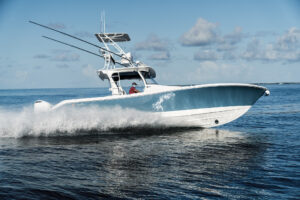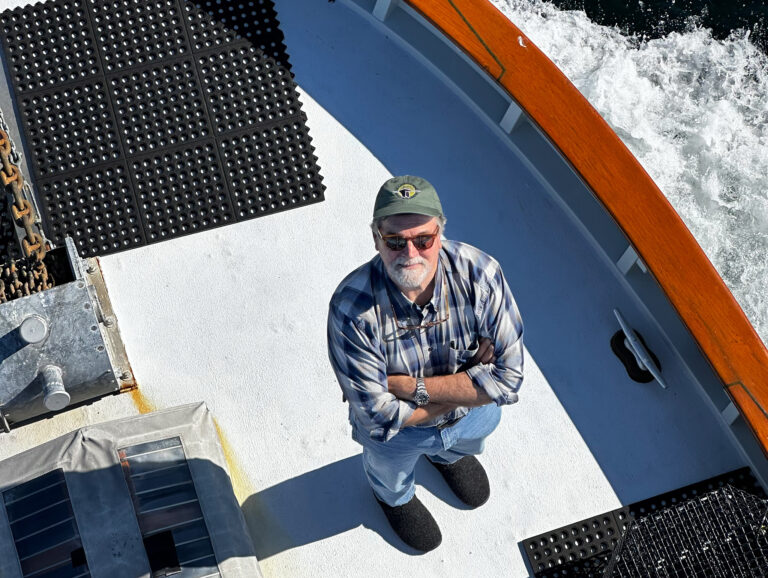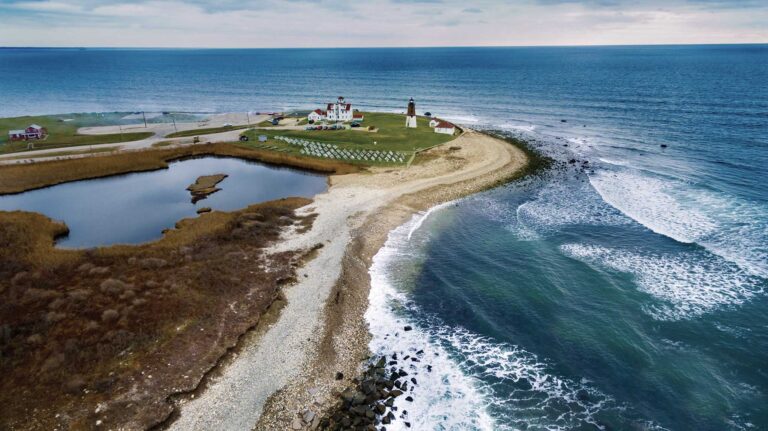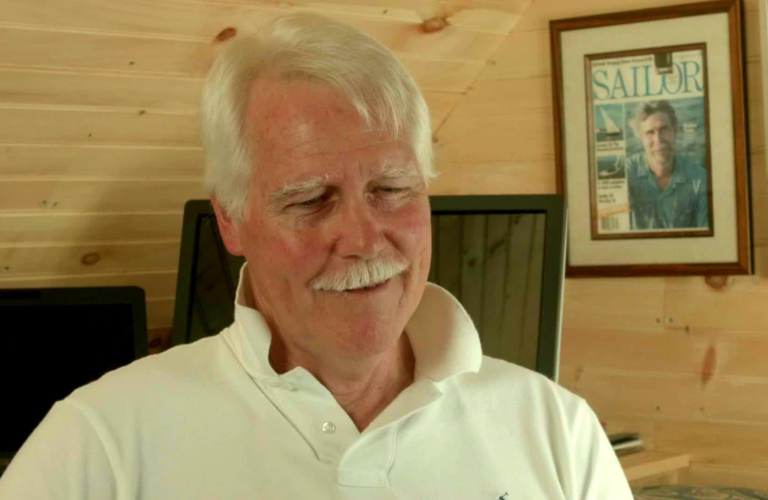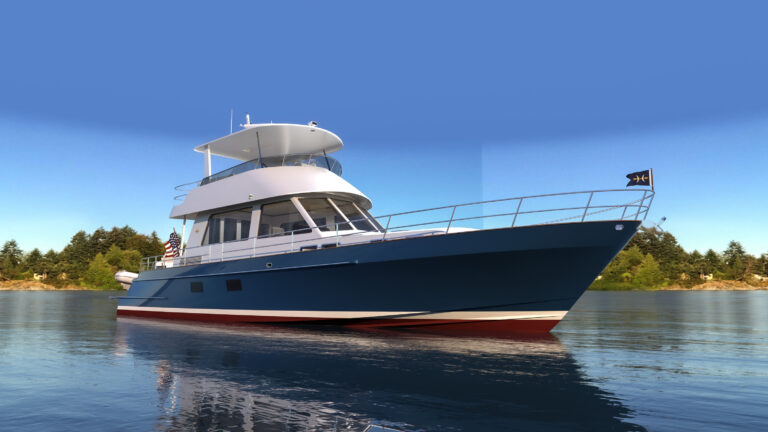In mid-May, Homewood Resort’s Marina installed the first electric-boat charging station on California’s Lake Tahoe. The news is big. So big that Sean Marrero, president of Ingenity Electric, has a hard time containing his excitement. That’s because he thinks the charging station could become the standard-setting technology for similar stations all across the country.
“I think it’s the first marine CCS charger that’s anywhere in the U.S. It’s the first one that I’m aware of,” Marrero says. “It’s showing you what’s to come.”

CCS stands for Combined Charging System. It has a type of connector that, if an electric-powered boat is built to accept the connection, allows for rapid charging—basically, the difference between using a regular shorepower plug and having to let the boat charge slowly overnight, or using a CCS connector to get back out on the water much faster.
CCS is also the type of rapid-charging technology that is growing in popularity among automakers for electric vehicles. The idea behind making vehicles CCS-ready is that, just as with gas stations today, electric-charging stations can have universal power “pumps” that fit into every type of vehicle. BMW, Ford, General Motors, Honda and Volkswagen are among the many automotive brands now supporting CCS in their electric designs. Even Tesla, which has its own network of rapid chargers, started adding CCS connectors a couple years ago, so that Tesla owners could access a fast charge in as many locations as possible.
That kind of widespread adoption of CCS technology hasn’t happened yet in the marine world, which is only now starting to see electric boats that are intended to be mass-produced with widespread appeal. It’s not that e-boats are entirely new; Duffy Electric Boats has been around since 1970, producing 16- to 22-footers. But those boats have top speeds in the 4- to 5-knot range, giving them a fan base far smaller than gas-powered speedsters. Vision Marine Technologies, a Canadian company founded in 1995, offers 100 percent electric boats from 15 to 22 feet that go about the same speeds. In 2017, Hinckley Yachts introduced Dasher, a 28-footer that was marketed as the world’s first fully electric luxury boat with a cruise speed of 7 knots—and the ability to hit 23.5 knots, albeit for short time periods. A newer option is Swedish builder Candela’s C-7, a 25-foot electric boat that debuted last year with foils and a top speed of 30 knots. It can reportedly cruise for about 50 nautical miles at 22 knots.
“I don’t know a lot of other boats that are out there today that have adopted the CCS standard, but I would not be surprised if they started showing up,” Marrero says. “It just makes a lot of sense.”
It at least made sense to Marrero’s team at Ingenity, which is a project of Watershed Innovation, a division that Correct Craft founded in 2018 to focus on technologies that would benefit the marine industry. Watershed introduced the Ingenity brand in 2020 with a goal of bringing a high-power electric drive to watersports boats for activities like waterskiing and wakeboarding. Ingenity’s first model is the Super Air Nautique GS22E, an electric-powered version of the gas-powered Super Air Nautique GS22. The electric version, Marrero says, hits the same speeds while giving boaters the same ride for about two to three hours—the amount of time Ingenity’s research shows 90 percent of people use the gas-powered boat for watersports. “We are in production and selling this boat,” Marrero says. “It’s fully functional and designed to replicate the experience you would have on the gas version. If you were riding behind the boat, you’d notice it’s quieter and there’s no exhaust.”

Ingenity equipped the GS22E with a CCS onboard charger specifically to avoid having to invent a proprietary charging system the way Tesla originally did for its vehicles. “We didn’t set out to be in the charging business, but you can’t be in the business of selling electric boats if you don’t learn about charging,” he says.
What Ingenity learned led not only to the use of the CCS onboard charger, but also to the effort to get a CCS charging station onto a waterfront, to create a demo experience for the general public. That’s the charging station that Homewood Resort’s Marina on Lake Tahoe just installed.
“We have been working with the Ingenity team on this project for over three years,” David Topol, director of the marina, stated in a press release. “It’s exciting to see this project come to life and provide an electric boat experience at our location this summer.”
The Ingenity Experience, as it’s being called, lets groups of six people try out the Super Air Nautique GS22E with the help of a captain and wake-sports coach. Tahoe Surf Company provides the coaching, and Superior Boat Repair & Sales provides information about owning one of the electric boats, which Marrero says cost about twice as much as the gas-powered version.
Marrero says that being aboard the boat and seeing firsthand how the rapid-charging station works are eye-openers for most people who try it. “We’ve learned that one of the best parts is convenience,” he says. “You don’t have to take it anywhere to gas it up, you don’t have to haul gas cans, you’re never spilling gas into the water—all of that goes away.”

People with the means to buy the more expensive e-version of the boat often install their own CCS chargers, Marrero says. Marinas are still figuring out the cost-benefit analysis in relation to consumer demand. In addition to a financial investment, there’s also an investment of time to get approval from local authorities. Because the technology is new it can take months for approval, “and you have to be pretty assertive,” he says. “It takes some follow-through.” Marina owners also have to evaluate the electricity setup that runs to their docks. The Super Air Nautique GS22E, as an example, can charge with as little as 240-volts and 30 amps of AC power—a requirement that many marinas can satisfy with shorepower plugs.
“It’s going to be a very slow charge, so if you’re a marina with electric boats mooring there, it’s OK for customers to plug in and have it ready the next day,” Marrero says. “But if you are looking to have someone top off while they’re having lunch, then you’re going to want to have something with more power. And if everyone had a boat like this and wanted to charge, you’d probably have to upgrade the main service coming into the marina. It’s an exercise in how fast you want boats to charge, and how fast you want to be able to charge multiple boats at the same time.” As an example, he adds, the Super Air Nautique GS22E can take up to 90 kW of power to charge its battery. “That’s a pretty significant investment for the hardware and the grid power to be able to do that,” he says. “Most marinas probably have that at their main service panels, but they’ll need something new put in to get it down to the docks.”
On the other hand, Marrero says, there are ways for marinas to monetize that investment—ways that boaters considering a switch to electric boats should know are likely in their future. Some charging stations have built-in RFID readers and credit-card processing, for example, and can be set up in a way that boaters pay a premium to recharge, say, during the lunch or dinner rush at a marina with a restaurant.
“The marina has to decide how they view this,” he says. “Is it an amenity to help attract more people, or a business play to make an investment and get a return? Or it could be some combination of both.”

For marina owners interested in replicating the new setup on Lake Tahoe, Ingenity is eager to help. “We want to scale this model to other locations,” he says. “It is a chicken-and-egg constraint that we have right now. If there’s not a place to charge the boat, we can’t sell the boat, so we have an interest in solving that problem in key markets.”
This article was originally published in the August 2021 issue.

